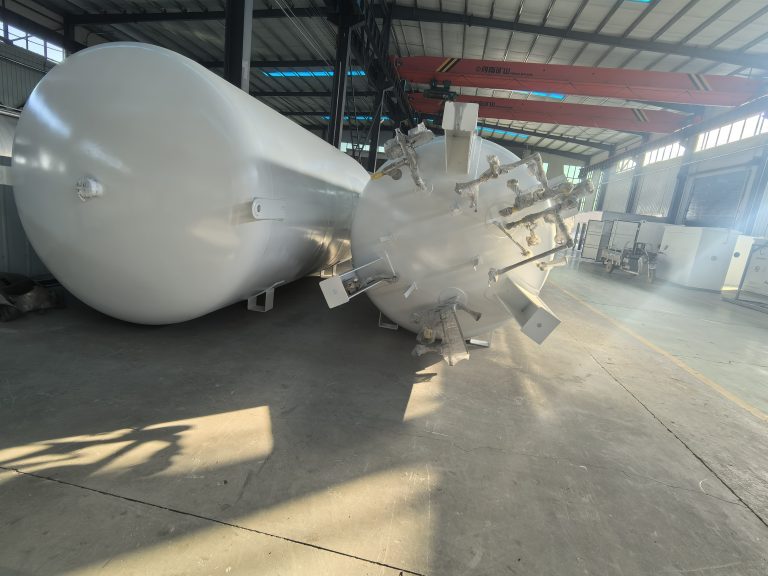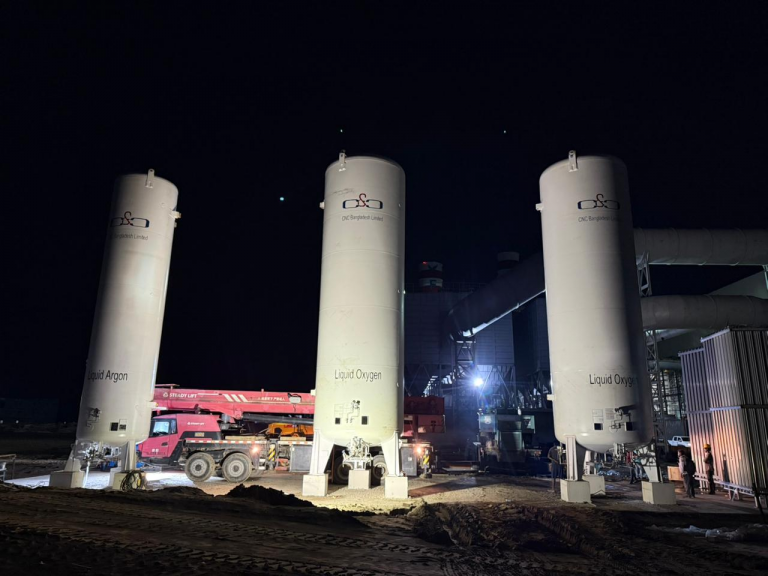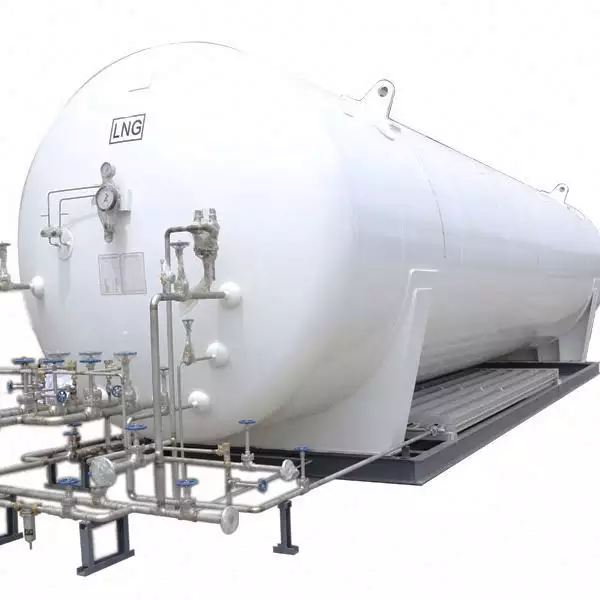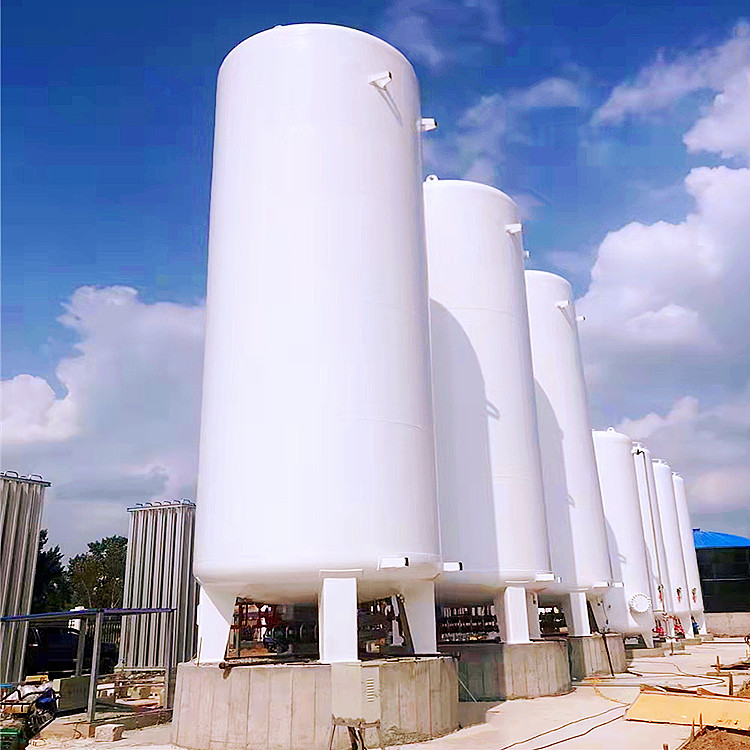A Complete Guide from Liquefied Carbon Dioxide to Finished Dry Ice Blocks
Dry ice (solid carbon dioxide) has become an indispensable cooling medium in fields such as food preservation, medical transportation, and industrial cooling due to its unique low-temperature properties and eco-friendly attributes. This article details how liquefied carbon dioxide transforms into finished dry ice blocks.
I. Storage and Transportation of Liquefied Carbon Dioxide
The first step in dry ice production is storing liquefied carbon dioxide. Liquefied carbon dioxide storage tanks are designed for high pressure and low temperatures, ensuring stable storage of carbon dioxide in its liquid state. This storage method not only saves space but also guarantees the purity and stability of the carbon dioxide.
When dry ice production is required, cryogenic pumps extract the liquid carbon dioxide from the storage tanks and transport it to the dry ice machine. This process demands precise control of pressure and temperature to maintain the liquid state of the carbon dioxide during transport, preparing it for the subsequent evaporation and condensation process.
II. Evaporation and Condensation Process in Dry Ice Machines
Upon entering the dry ice machine, liquefied carbon dioxide rapidly evaporates and condenses into snow-like dry ice. The machine achieves this by rapidly lowering internal pressure to evaporate the liquid carbon dioxide within a very short timeframe. Simultaneously, the cryogenic system swiftly cools the evaporated carbon dioxide gas to its solid state, forming snow-like dry ice pellets.
The key to this process lies in controlling evaporation rate and cooling temperature. Excessively rapid evaporation may result in oversized dry ice particles, affecting subsequent extrusion molding. Insufficient cooling temperature may cause loose dry ice particles, preventing the formation of stable block-shaped dry ice. Therefore, dry ice machines require precise pressure and temperature control systems to ensure the quality and uniformity of dry ice particles.
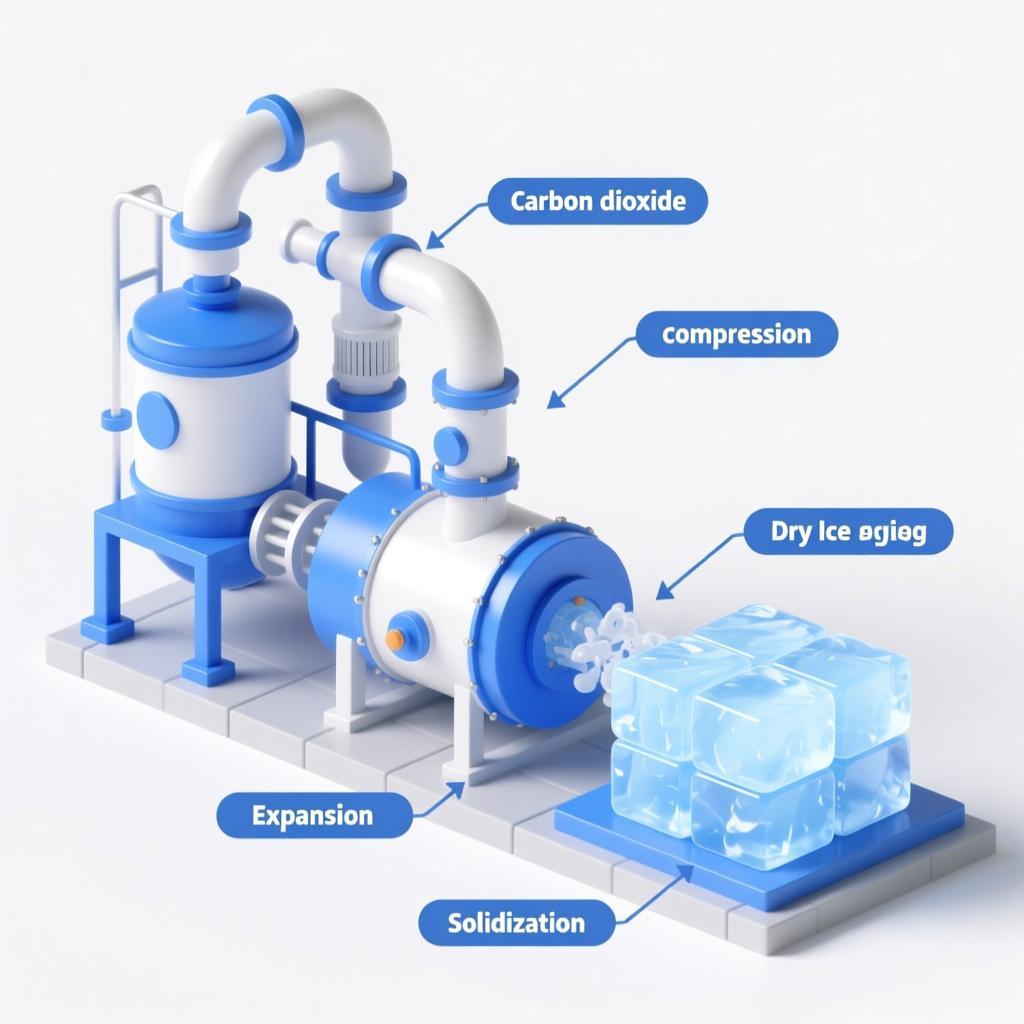
III. Dry Ice Extrusion Molding and Packaging
After forming, the snow-like dry ice falls into an extrusion chamber via a dedicated mechanism. Within this chamber, descending molds compress the dry ice particles into solid blocks. The mold shape and pressure applied during extrusion directly determine the block’s dimensions and density, necessitating precise adjustments based on customer specifications.
The extruded dry ice blocks proceed via conveyor belt to the packaging stage. During packaging, the blocks are placed into specialized insulated containers to prevent sublimation and maintain low temperatures. These containers are typically constructed with multi-layered insulation materials, effectively minimizing heat transfer from the external environment and ensuring the stability of the dry ice blocks during transportation and storage.
IV. Advantages and Challenges of the Dry Ice Production Process
Advantages
- Energy Efficiency: Utilizing high-pressure cryogenic storage and cryogenic pump transportation technology significantly reduces energy consumption and enhances production efficiency.
- Environmental Safety: The production process generates no harmful substances, and dry ice itself is non-toxic, odorless, and leaves no residue, meeting environmental standards.
- Wide Application: Dry ice has extensive applications in food preservation, medical transport, industrial cooling, and other fields, with substantial market demand.
Challenges
- High Technical Barriers: The dry ice production process involves multiple technical stages—high-pressure cryogenic storage, cryogenic pump transportation, evaporation condensation, and extrusion molding—demanding sophisticated equipment and expertise.
- Significant Capital Investment: Dry ice production equipment requires substantial upfront investment, along with regular maintenance and upgrades, increasing operational costs for enterprises.
- Storage and Transportation Difficulties: Dry ice readily sublimates during storage and transport, necessitating effective insulation measures that complicate handling and logistics.
V. Conclusion
The dry ice production process—from storing and transporting liquefied carbon dioxide, through the evaporation and condensation within dry ice machines, to the extrusion molding and packaging of dry ice—embodies the essence of modern technology at every stage. With continuous technological advancements and market expansion, dry ice production will become increasingly efficient, environmentally friendly, and safe, making greater contributions to the sustainable development of human society.



